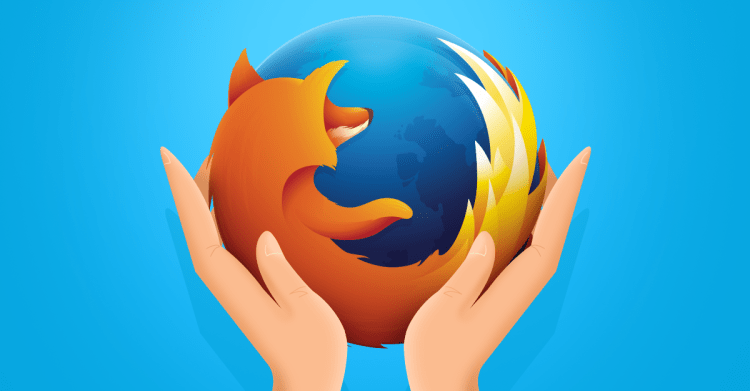Mozilla chief executive Chris Beard is not happy with Windows 10.
In an open letter published addressed to Microsoft CEO Satya Nadella, he chided the Redmond, Washington-based company over the its apparent decision to take away “choice and control” from the user. Beard admits that his team tried to work it out with Microsoft, but it “didn’t result in any meaningful progress.”
To pressure Microsoft to “undo” its actions, Mozilla is encouraging users to tell the Windows 10 manufacturer to “hit Ctrl+Z” and bring back user choice.
At issue is Beard’s contention that when users upgrade to Windows 10 (which debuted yesterday), the new operating system wants them to have an Internet experience that Microsoft wants them to have — specifically with Microsoft’s new Edge browser. Although it’s “technically possible” to retain your previous settings and defaults, Beard believes that somehow Microsoft has buried these settings somewhere deep in the operating system that makes it hard to get to.
“With the launch of Windows 10 we are deeply disappointed to see Microsoft take such a dramatic step backward,” says Beard. In a separate post, he writes:
Sometimes we see great progress, where consumer products respect individuals and their choices. However, with the launch of Windows 10, we are deeply disappointed to see Microsoft take such a dramatic step backward. It is bewildering to see, after almost 15 years of progress bolstered by significant government intervention, that with Windows 10, user choice has now been all but removed.
Although Beard says that his team has reached out to Microsoft prior to publishing this letter, nothing has been disclosed about how far talks have gone and why no progress was made.
This isn’t the first time Microsoft has been ripped over user control. In 1998, the U.S. Department of Justice filed an antitrust suit against the technology company claiming that it was monopolizing the computer software industry in coupling Windows with Internet Explorer. It was alleged at the time that Microsoft had attempted to persuade Netscape to not compete against it. Netscape obviously didn’t comply.
Additionally, federal authorities claimed that Microsoft was misusing its stranglehold on the operating system world by requiring manufacturers to adopt certain standards that Microsoft set. To Beard, it doesn’t want Microsoft to “roll back the clock” to that era.
We’ve reached out to Mozilla for comment and will update this if we hear back.
Update: A Microsoft spokesperson has responded to VentureBeat’s inquiry, saying: “We designed Windows 10 to provide a simple upgrade experience for users and a cohesive experience following the upgrade. During the upgrade, consumers have the choice to set defaults, including for web browsing. Following the upgrade, they can easily choose the default browser of their choice. As with all aspects of the product, we have designed Windows 10 as a service; if we learn from user experience that there are ways to make improvements, we will do so.”
Here’s Beard’s open letter to Microsoft:
Satya,
I am writing to you about a very disturbing aspect of Windows 10. Specifically, that the update experience appears to have been designed to throw away the choice your customers have made about the Internet experience they want, and replace it with the Internet experience Microsoft wants them to have.
When we first saw the Windows 10 upgrade experience that strips users of their choice by effectively overriding existing user preferences for the Web browser and other apps, we reached out to your team to discuss this issue. Unfortunately, it didn’t result in any meaningful progress, hence this letter.
We appreciate that it’s still technically possible to preserve people’s previous settings and defaults, but the design of the whole upgrade experience and the default settings APIs have been changed to make this less obvious and more difficult. It now takes more than twice the number of mouse clicks, scrolling through content and some technical sophistication for people to reassert the choices they had previously made in earlier versions of Windows. It’s confusing, hard to navigate and easy to get lost.
Mozilla exists to bring choice, control and opportunity to everyone. We build Firefox and our other products for this reason. We build Mozilla as a non-profit organization for this reason. And we work to make the Internet experience beyond our products represent these values as much as we can.
Sometimes we see great progress, where consumer products respect individuals and their choices. However, with the launch of Windows 10 we are deeply disappointed to see Microsoft take such a dramatic step backwards.
These changes aren’t unsettling to us because we’re the organization that makes Firefox. They are unsettling because there are millions of users who love Windows and who are having their choices ignored, and the increased complexity put into everyone’s way if and when they choose to make a choice different than what Microsoft prefers.
We strongly urge you to reconsider your business tactic here and again respect people’s right to choice and control of their online experience by making it easier, more obvious and intuitive for people to maintain the choices they have already made through the upgrade experience — and easier for people to assert new choices and preferences, not just for other Microsoft products, through the default settings APIs and user interfaces.
Please give your users the choice and control they deserve in Windows 10.
Sincerely,
Chris Beard
CEO, Mozilla
VentureBeat's mission is to be a digital town square for technical decision-makers to gain knowledge about transformative enterprise technology and transact. Learn More

